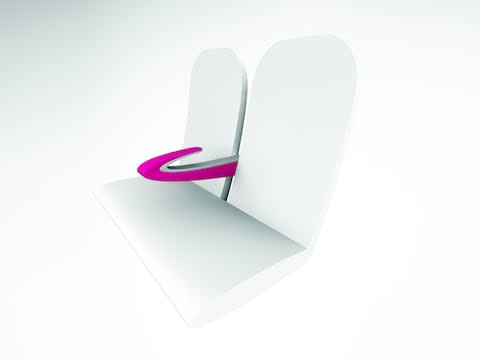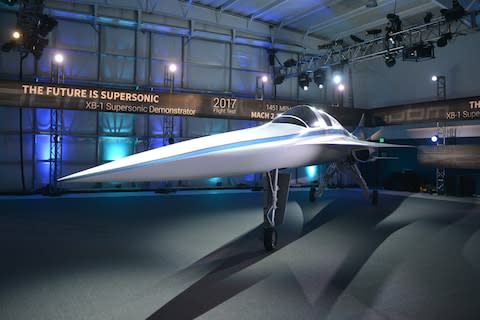What people in the 19th century thought travel would look like today

Predicting the future of travel is no easy task – but that rarely stop people trying. Just last month a self-styled ‘futurist’, Richard Watson, told us that paper boarding passes are on the way out (well obviously), Instagram will fall from fashion (really?), and passenger drones will one day transport people from one city to another (yeah right). He went on to suggest that Westworld and teleportation “are not completely impossible” – cue plenty of raised eyebrows.
But who’s to say he won’t be proven right? After all, one of the most famous sci-fi creations, Back to the Future, made some bold but brilliant predictions back in the Eighties. It correctly prophesied the use of drones, fingerprint scanning, tablet computers, hands-free gaming, wearable technology and video calls. Even Marty’s hoverboard is almost a reality. Lexus, the Japanese car manufacturer, has even created a rideable prototype.
One of Back to the Future’s biggest predictions, however, missed the mark. Namely, flying DeLorean cars. And when it comes to other predictions for how travel might work in the future, flying personal transportation has been something of a constant. People imagined we’d all be whizzing around the heavens by now, as these series of paintings, produced by French artists in the late 19th century and stumbled upon by science fiction author Isaac Asimov in the Eighties, demonstrate.




Even more fanciful were their depictions of life under the sea. By the year 2000, surely we’d be taking humpback taxis and playing croquet on the seabed?

These German postcards, produced on behalf of the chocolatier Hildebrands, are equally imaginative. An afternoon stroll across the lake, anyone?

A quick ride on the sea train? Wouldn’t this have been simpler than digging a tunnel to France?!

Personal flying machines - but of course - were also predicted.

So too were tourist boats that plunged to the murky depths in search of eels and perch - not dissimilar to the submarine-boats that offer sightseeing trips in areas rich in marine life today.

This was the early age of the airship, and the German firm thought that by now we might all be touring the Arctic on board fleets of them. True, polar tourism is now big business, but cruise ships, not blimps, are the preferred mode of transport.

Further predictions from the time, courtesy of J. Elfreth Watkins, a civil engineer, were published in The Ladies’ Home Journal. He envisaged, among other things, electric ships that could cross the Atlantic in two days and trains that travel at 150mph.
Cruise ships today take up to a week to make the journey from Britain to New York, but Japan’s Shinkansen “bullet trains” can reach 200mph and the Shanghai Maglev Train has a top speed of 270mph.
Our collective ambitions were not dulled in the aftermath of the Great War. This documentary from the 1920s predicts “monster planes” with “luxurious lounges and reading rooms”, capable of carrying 600 passengers from “New York to London in a day”.
They were right. The Airbus A380, the world's largest passenger aircraft, is certified to carry up to 853 (although no airline has yet chosen a seating configuration in excess of 538), while transatlantic flights typically take around six hours.
Streamlined ships, shaped like teardrops, were also predicted, although no-one imagined anything like the robot bartender that was unveiled a couple of years ago on Royal Caribbean’s Anthem of the Seas.

In the middle of the 20th century, flying cars were back in vogue. Popular mechanics suggested that “Aerial Sedans” were on the cards with this front cover.

And personal helicopters too.

In 1962 The Jetsons presented this vision of the future (2062, to be precise).

And a 1967 issue of US News and World Report reckoned today’s world would see motor vehicles banned from city centres and planes that take off vertically, before speeding across the globe at 2,000mph. Concorde, which moved at 1,350mph, remains the benchmark.
Driverless cars were also predicted. They are very close to reality.

Self check-in at train stations and airports is now de rigueur.

So how do today’s experts imagine holidays and travel will develop?
Flying
When it comes to flying, don’t expect things to get much more comfortable up there. Aircraft manufacturers are constantly trying to squeeze as many passengers on board as possible. A 2015 patent application, from Airbus, involved the addition of a mezzanine level. Others have even suggested vertical seating – or “bar stools with seat belts”, as Ryanair dubbed them – or simply letting people stand.

But smaller changes could ease tensions, such as this “paperclip armrest”, designed to end the constant battle for elbow space in the sky.

Skyscanner, the flight comparison website, reckons plane seats might use “memory foam” to fit a traveller’s exact body size and shape. Other advancements may include personalised climate control, bigger windows, smart lighting that reduces the effect of jet lag, and bar areas for passengers to mingle in (Virgin Atlantic and Emirates already have a bar in their business class cabins).
Internet access, and unlimited gadget use (including during take-off and landing), is already becoming the norm, while in-flight shopping (beyond duty free scents and cuddly toys) is another possible innovation.
For a vision of flying in 2050, check out Airbus’s “concept plane of the future”, revealed in 2011. It features advanced fuselage technologies offering touch-of-a button transparency for panoramic views. Passengers could, the manufacturer suggests, one day make video and phone calls from their seat to anywhere in the world, or shut themselves off from other passengers using “holographic pods”.
More flight delays are also predicted. As the skies get more crowded, delays at UK airports will be “44 times worse by 2030”, according to figures from National Air Traffic Services.
But Supersonic flight looks likely to return (which should mitigate that increase in delays). Boom Supersonic is one of a handful of firms attempting to revive the commercial prospects of planes that can travel faster than the speed of sound, something not seen since the demise of the Concorde in 2003. The Denver-based operation has developed prototypes of a 55-seater jet that will have a cruising speed of 1,451mph, 100mph faster than the Concorde, and hopes to begin passenger flights by 2025.
Then there is the tantalising prospect of hypersonic flight, which would cut the journey time between London and New York to just an hour. Boeing admits that the innovation is 20 or 30 years off, but insists that such a technological leap is entirely feasible.
Others have suggested unmanned aircraft will be taking us overseas within 50 years.

On the ground, expect security checks to be replaced by “a security infrastructure that’s constantly screening people from the door to the gate.” That's according to Seth Young, director of the Center for Aviation Studies at Ohio State University, in a report for Skift.
And what of space tourism? It inches closer to reality. Virgin Galactic is still plugging away, while tickets to ride a helium balloon to a height of 20 miles, with the firm World View, can be bought for around £60,000.
Hotels
Rooms will be packed with technology, according to a 2015 Best Western report, with human-to-human contact increasingly rare and everything ordered and arranged using your mobile.
Travelodge, the budget chain, anticipates technology that will monitor a guest’s energy levels, health and mood to ensure they get a better night’s sleep. Medical conditions could even be diagnosed.
It adds that dreams might eventually be controlled, in a similar manner to the film Inception, and we would one day be able to study or learn new languages in our sleep. “We will be able to replay our favourite dream from a menu just like choosing a movie,” its 2011 report, The Future of Sleep, claims.
There are some bonkers-looking hotels on the way too, like this Slovakian mountain lodge.

And this floating hotel in Tromso.

Destinations
France - the world’s most popular holiday destination for at least three decades - will be ousted from the top spot by 2030, according to experts at Euromonitor International, a market research group. Thanks to the growing demand for travel among Asia’s burgeoning middle class, it believes it is only a matter of time before it is overtaken by China (currently fourth).
Other Asian nations will no doubt benefit from the region’s growth. Among the 10 fastest growing travel destinations since 2010 are Japan (+234 per cent), India (+167 per cent), Vietnam (+158 per cent), Thailand (+122 per cent), Taiwan (+91 per cent) and the Philippines (+89 per cent). Western countries have experienced far more modest growth over that period, with the US seeing an increase of just 22 per cent, Germany 39 per cent, and the UK 33.2 per cent.
This trend looks likely to continue. The 20 most visited countries in 1990 included Hungary, Switzerland, Portugal, Czech Republic and Belgium. They have since been replaced by the likes of Japan and Macao. By 2030, India, Indonesia and Vietnam could well be dining at the top table.
There are some remarkable new tourist attractions planned too, including SeaOrbiter, an observation vessel that will sail the world's oceans and chart previously unexplored waters.

But technology might soon make travel entirely redundant. Some experts predict we’ll be able to see (and virtually visit) precise replicas of the world’s most popular destinations within a decade using kit like Oculus Rift.
And flying cars?
Thanks to Marty and Doc Brown, it seems we can’t get the idea of flying cars out of our minds. And, according to a 2015 survey by Marriott, the hotel group, a quarter of us still think they are a possibility. Roads? Where we're going, we don't need roads.
